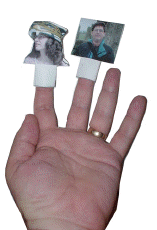·
I recognize
students’background knowledge varies
·
I maximize student
growth and individual success
·
I align tasks and
objectives to learning goals
·
I vary
the degree of complexity to suit diverse learners.
·
I focus
on the concepts, principles and skills that students should learn
·
I conduct
whole-class introductory discussions of content big ideas followed by small
group or paired work. Grouping of students is not fixed. Grouping and
regrouping changes based on the content, project, student dynamics, student
ability within a group, and evaluations.
·
Meaningful pre-assessment naturally leads to functional and successful
differentiation
·
Students are active
and responsible learners. T
·
I do my best every
night when I prepare for the next day's lessons to make sure that each task
will be interesting, engaging, and accessible to essential understanding and skills.
will be interesting, engaging, and accessible to essential understanding and skills.
·
I make an effort to
see that each child feels challenged
·
I clarify key
concepts and lesson objectives after welcoming them to another hour of
enrichment and prior to the lesson beginning
·
I provide many
opportunities for critical and creative thinking
·
I make
sure that all students have choices in their learning
·
By moving around my
room during the whole class period and personalizing my instruction (I kneel
down next to student during whole, small group, or individual discussions and
invite them in our interaction of the material), I am very successful in
engaging and motivating all willing learners
Diverse Learning in my classroom
I chose the "visual" section of the technology site for diverse learners. I am always searching for visuals - pictures to represent vocabulary, literary terminology, the setting of, and historical aspects of the novels that we interact with. I really liked the idea of using a digital camera to create finger puppets for different elements of narrative and genre that pertain to each novel we read. The digital camera link looks like it has a plethora of ideas.
UDL - Universal Design for Learning
The example above is from the curriculum resource, "Beyond the Book Report." I need new ways to assess the students' understanding of the elements of narrative in books of their "choice" during the year. I say, "choice" because we use the Accelerated Reader program which assigns book reading levels along with points per book; the students have point goals to meet every semester. Students can "choose" their books; however, there is a limited number of books to chose from. At any rate, they want to read books that are not AR, so I need to find alternate "things" for them to do other than a book report. This resource is going to come in handy for this. Moreover, the "100 Helpful Web Tools for Every Kind of Learner," is going to be great for different mode of information input for different learning styles. The text readers will be helpful for my almost nonreaders - Mind Mapping, Charts and Diagrams, and the text readers will bring even more of a visual aspect to lessons, as I find that they draw in the more reluctant learners or the ones that are off-task more than they are on-task. I find that they are more drawn into lessons and retain more when there is a visual to attach meaning to.


No comments:
Post a Comment